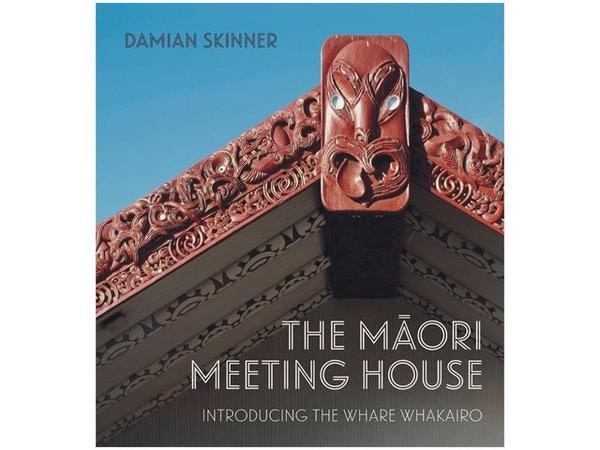
The Māori Meeting House: Introducing the Whare Whakairo
An accessible, illustrated guide to the history, artistry and cultural significance of the whare whakairo or Māori meeting house.
Free museum entry for New Zealanders and people living in New Zealand
Open every day 10am-6pm
(except Christmas Day)
Free museum entry for New Zealanders and people living in New Zealand
11 August 2016
They are part of New Zealand’s landscape, often seen on country roads, but also amongst our cityscapes. The Māori meeting house, or Whare Whakairo, has been an iconic feature of our country for 170 years, and now we have a new guide to their history and meaning.
Complete with more than 100 historical and contemporary photographs and original watercolour illustrations, The Māori Meeting House - Introducing the Whare Whakairo celebrates every aspect of these fascinating taonga (treasures).
Author, Pākehā art historian and curator, Damian Skinner says he needed all his years of writing about and researching Māori art to create this book.
“It’s an introduction to Māori meeting houses, but it is also an introduction to the complex history of Māori and Pākehā interactions,” Skinner says.
Skinner says different whare whakairo around the country carry the story of a fast changing world for Māori in the 19th century.
“The whare whakairo reflects history. You can see the impact of the missionaries on their art and architecture; the social protests of Te Kooti; the growth in availability of European made tools, and the movement of Māori into cities after World War II.
After World War II, Māori began moving into the cities in increasing numbers, bringing the Whare Whakairo with them. Increasingly, the meeting house became, as the late Ranginui Walker wrote, refuges. “…The last place where Māori values governed, where Māori could be themselves...”
“The history of the whare whakairo is not innocent,” says Skinner. “It’s a story of loss and grief.”
“History is told through the whare whakairo. They are a Māori form of architecture and art, but reflects both Māori and Pākehā relations over the past two centuries.”
“It can be tricky territory being a Pākehā scholar looking at Māori art, because curiosity starts to look like a claim to possession and ownership,” Skinner says.
“In the book I’m asking what it means for art history to take taonga Māori seriously. I’d argue that it is art historians, as well as Pākehā who have to ask some searching questions about what they do, and how they do it, if we are to really meet the expectations of Māori in twenty first century Aotearoa.
“I’m also saying a traditional art historical approach doesn’t always work neatly. A taonga is not an art work. Trying to work out a path between these two very different worlds is another reason for writing this book.”
The Māori Meeting House, Introducing the Whare Whakairo
Damian Skinner, Published by Te Papa Press, September 2016, RRP $49.99
Extent: 224 pp
Illustrations: 100+ colour and black-and-white images, and 10 original diagrams
Format: 250mm x 230mm
Binding: Paperback with flaps
ISBN: 9780994104151
Damian Skinner is an art historian, writer and curator. He is interested in the history of cultural contact between Māori and Pākehā, and the relationship between art and politics in Aotearoa New Zealand. He has written numerous books, including The Carver and the Artist: Māori Art in the Twentieth Century (2008) and The Passing World, The Passage of Life: John Hovell and the Art of Kōwhaiwhai (2010), which won the New Zealand Post Book Award for Illustrated Non-fiction in 2011. Damian is currently Curator of Applied Art and Design at the Auckland War Memorial Museum Tāmaki Paenga Hira.
Ellie Campbell, Senior Communications Adviser
04 381 7071
ellie.campbell@tepapa.govt.nz

An accessible, illustrated guide to the history, artistry and cultural significance of the whare whakairo or Māori meeting house.